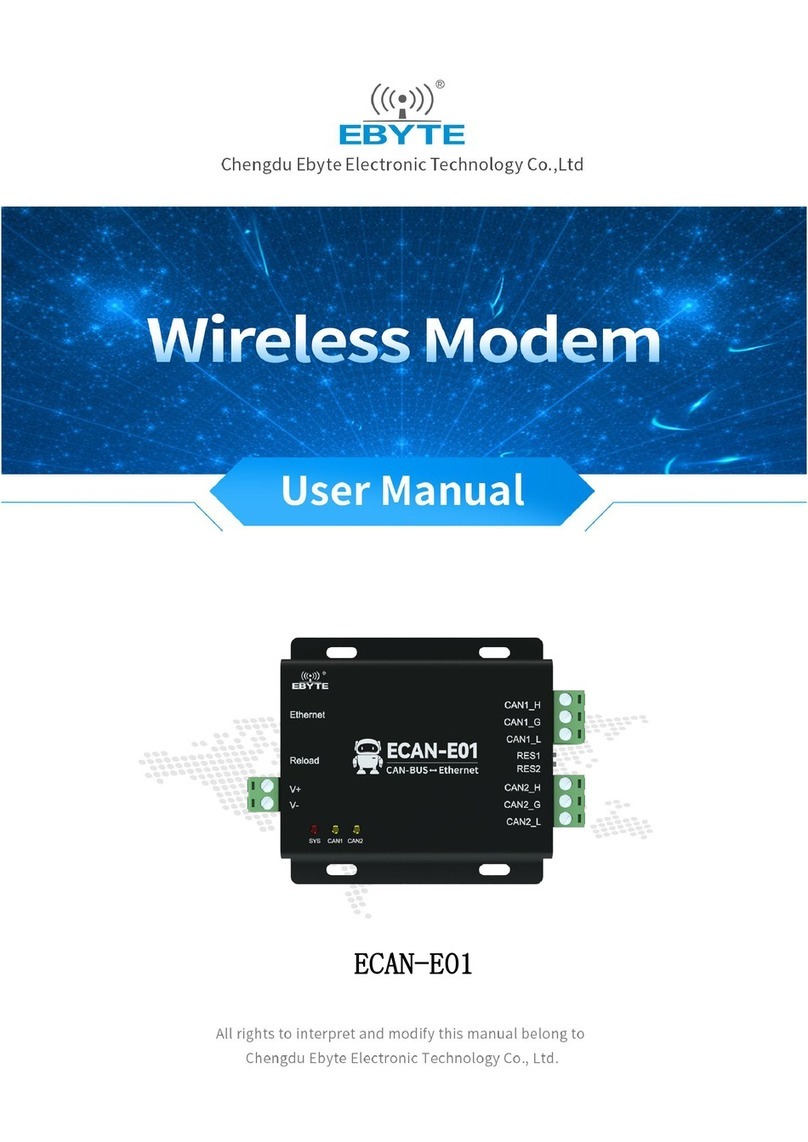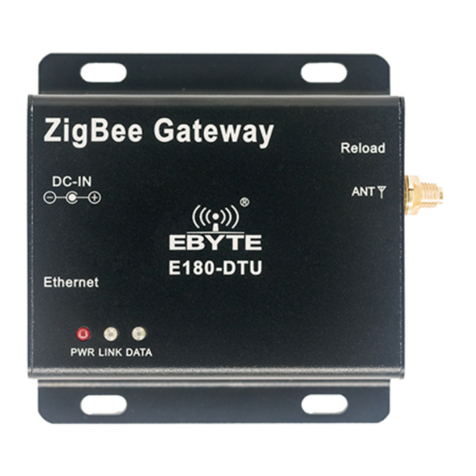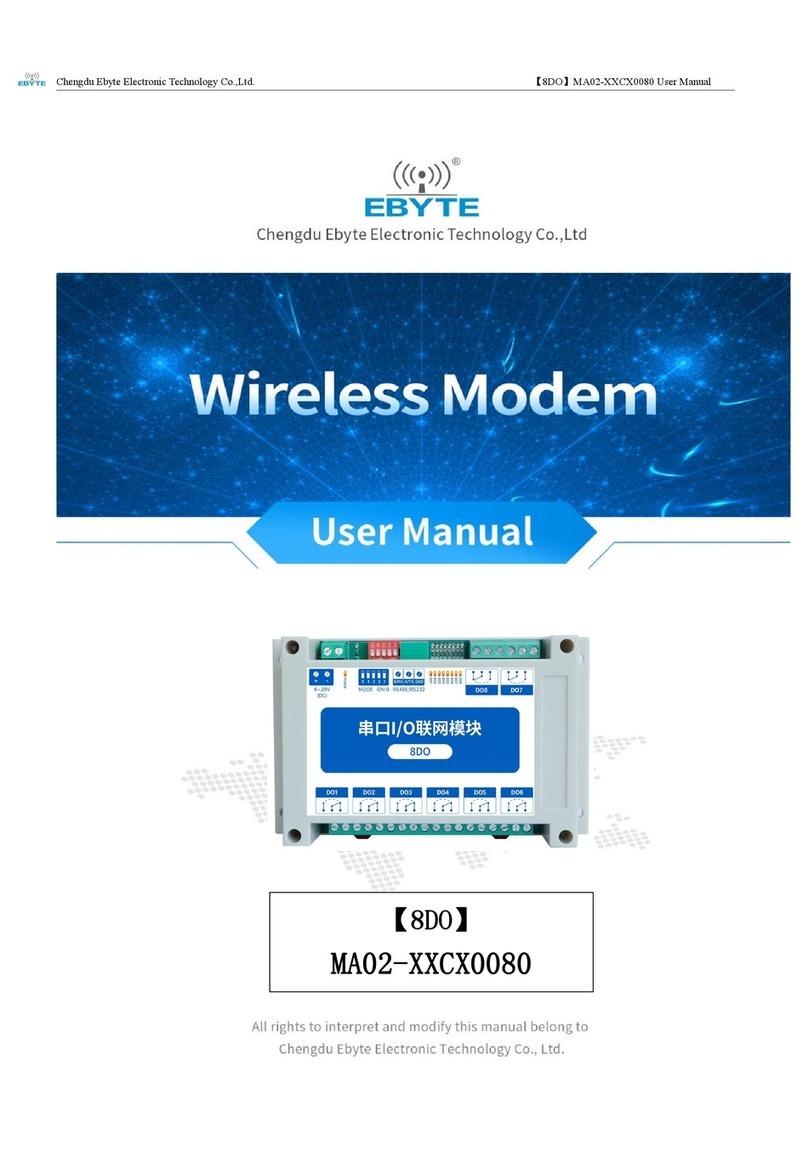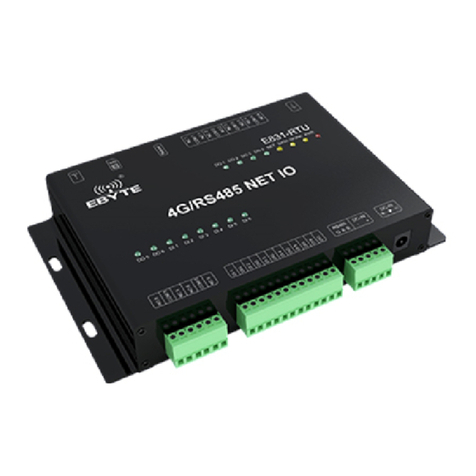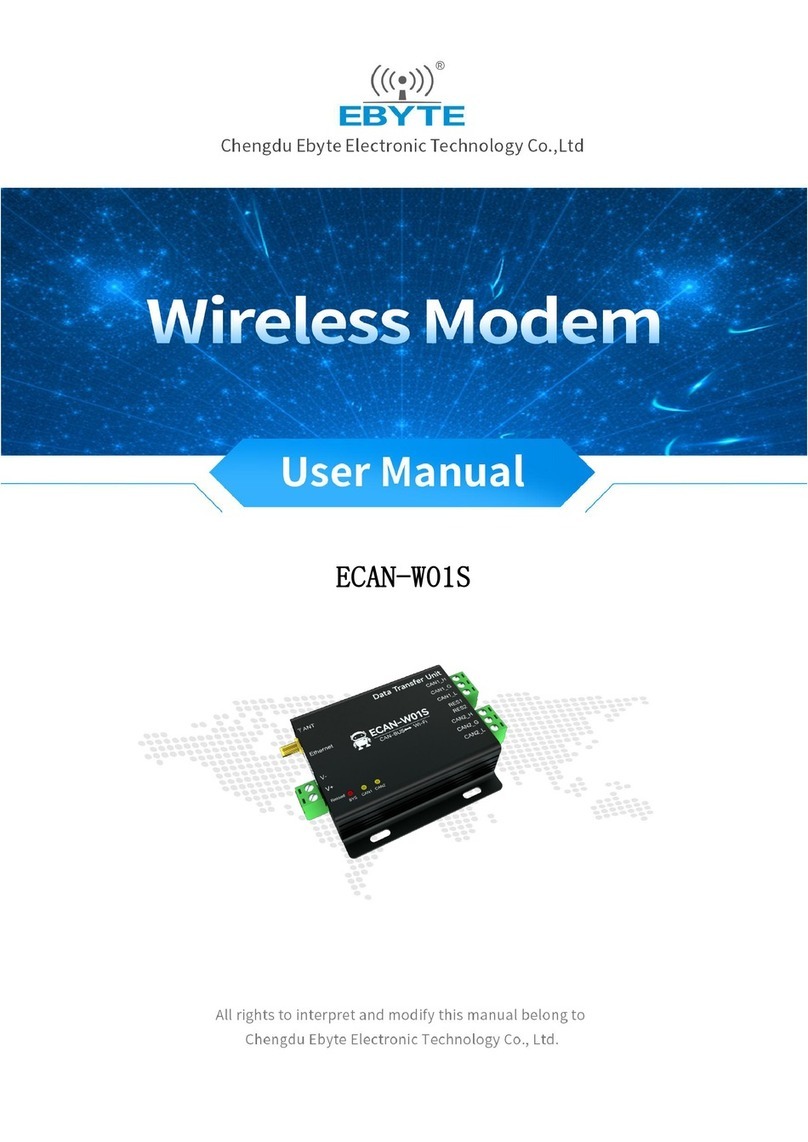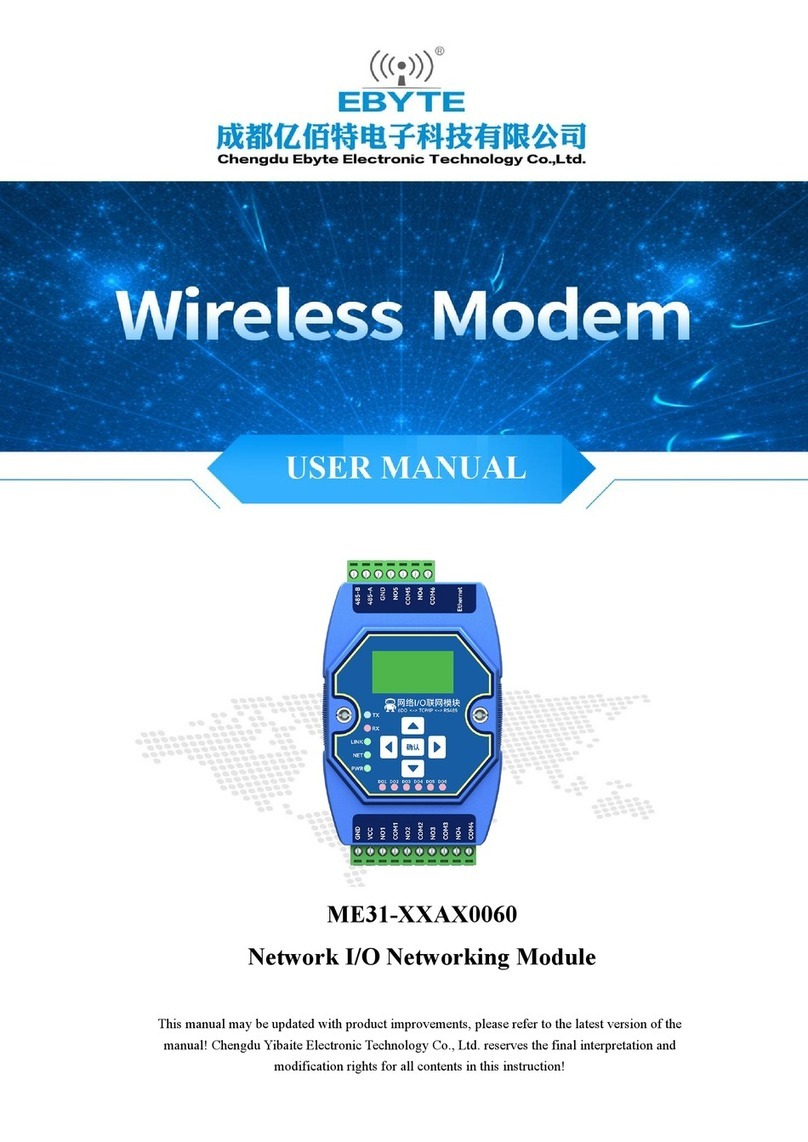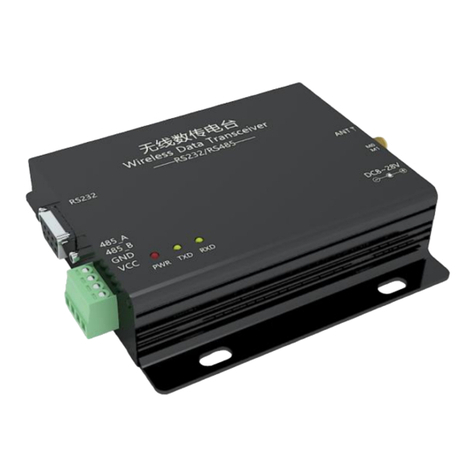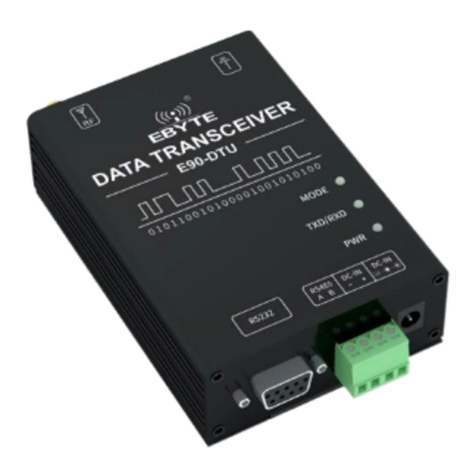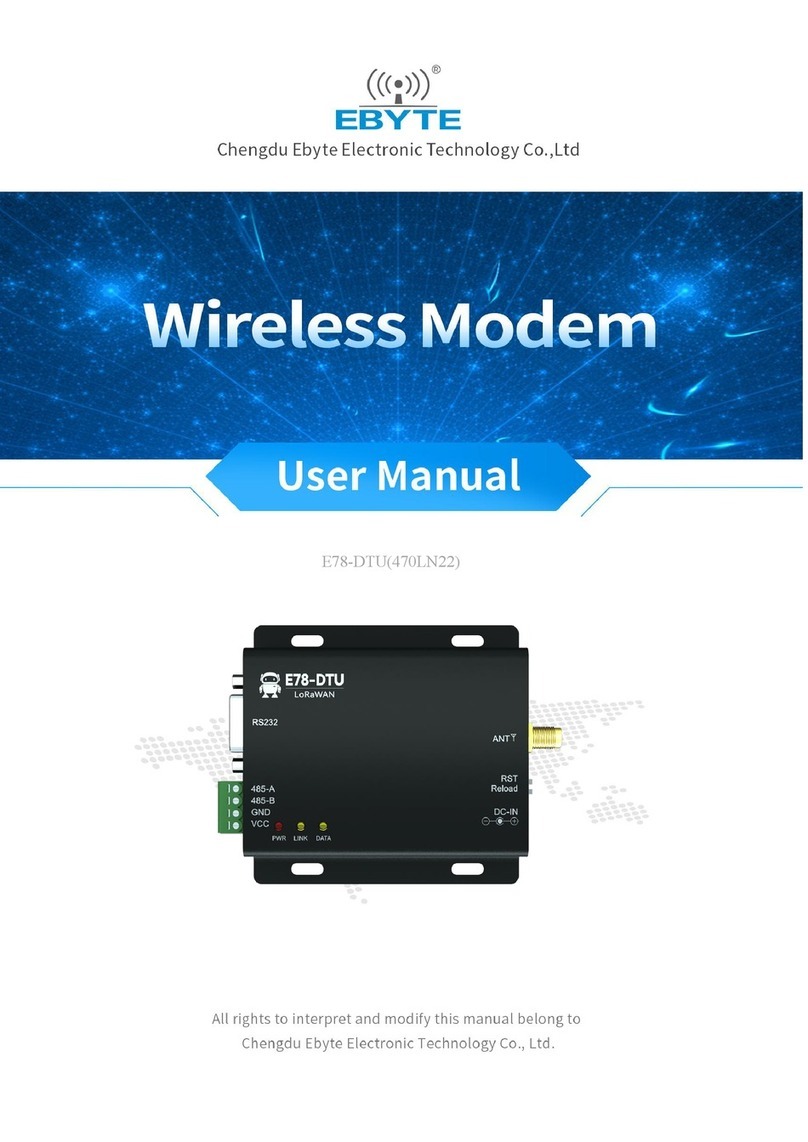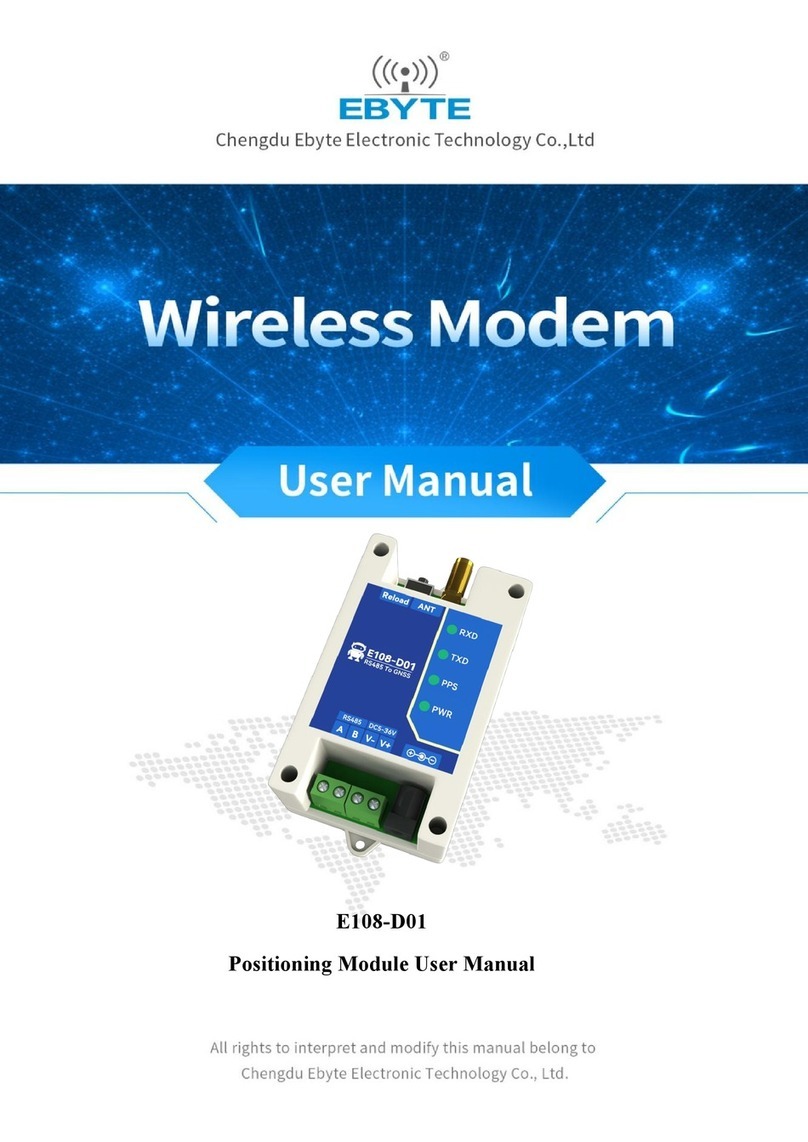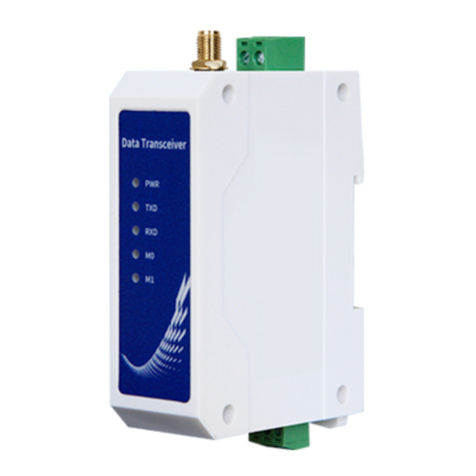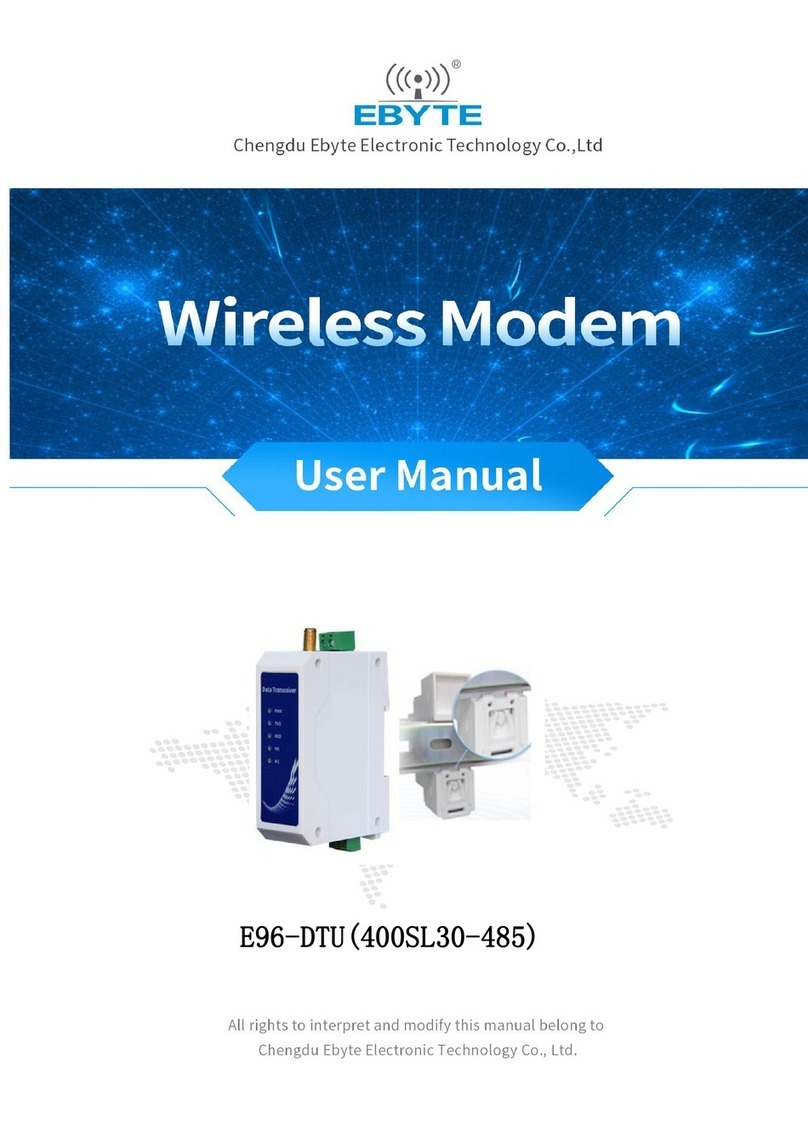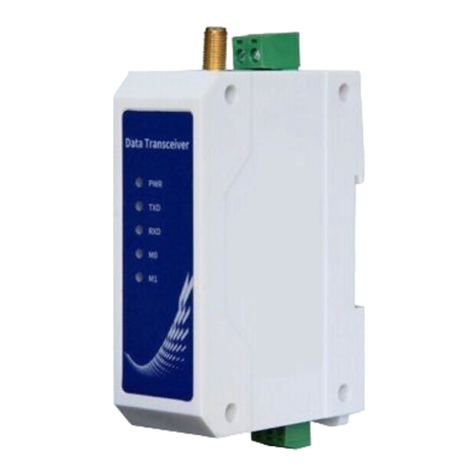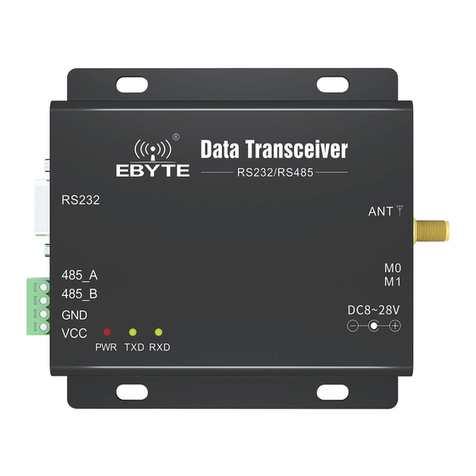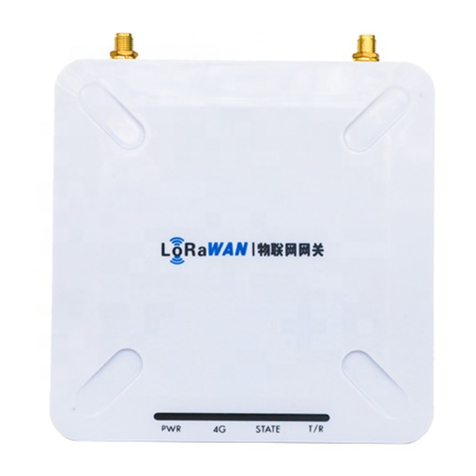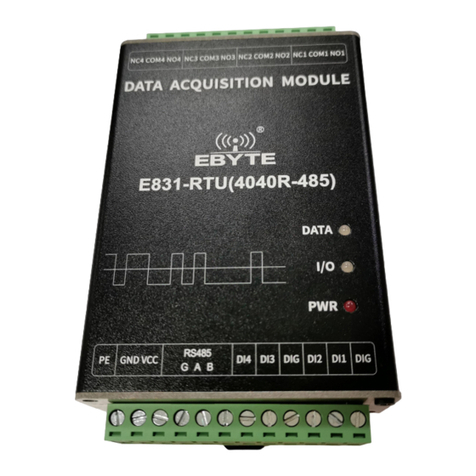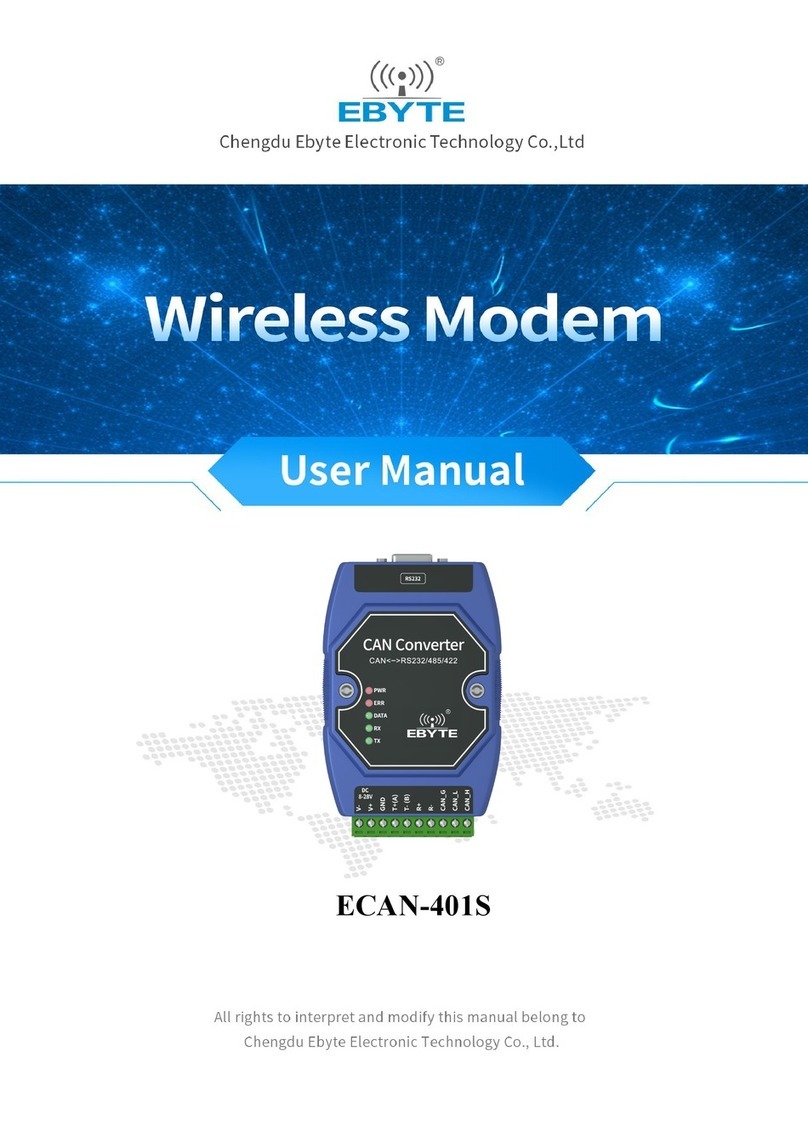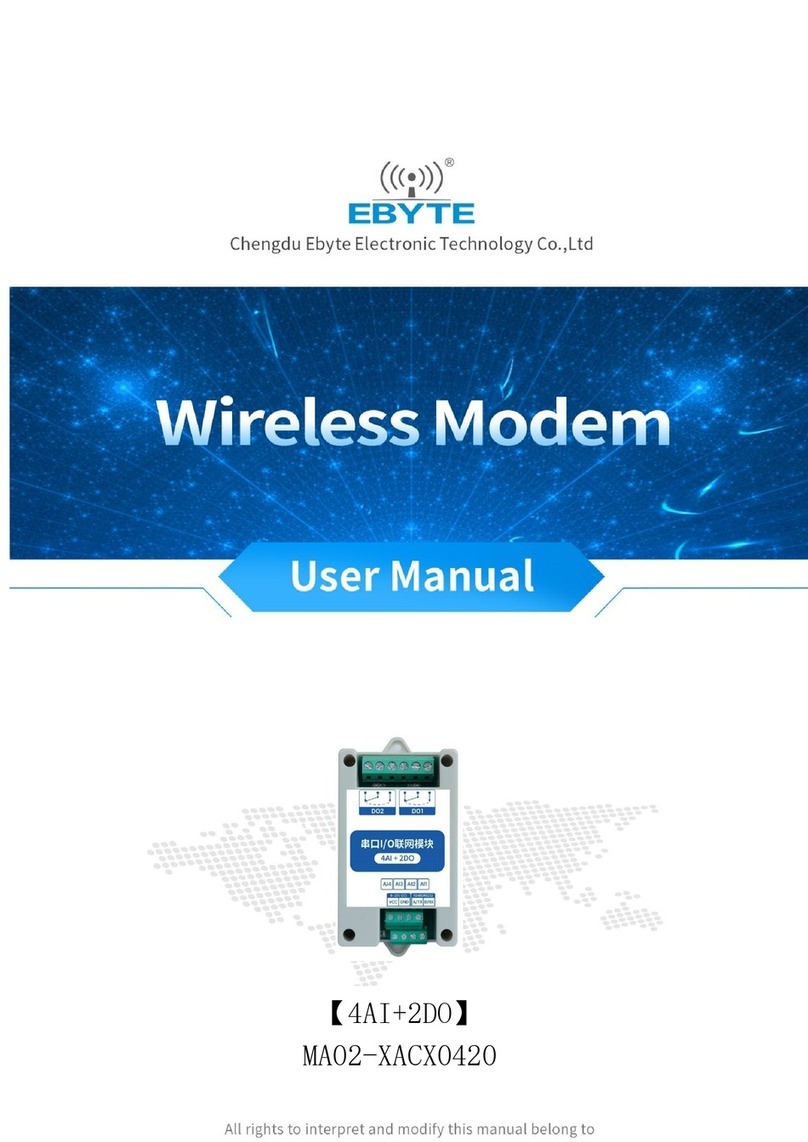
Chengdu Ebyte Electronic Technology Co.,Ltd. E95-DTU(433Cxx-485)-V2.0 User manual
Copyright ©2012–2023,Chengdu Ebyte Electronic Technology Co.,Ltd. 4
Ⅰ Product Overview
1.1 Product Description
E95-DTU(433Cxx-485)-V2.0 is a continuous transmission type 433M wireless digital transmission module,
built-in high-performance microcontroller and wireless transceiver chip, working in 410 to 441MHz band (default
433MHz), transmitting power 20/30dBm. It works in 410-441MHz frequency band (default 433MHz), with 20/30dBm
transmit power, the main function is that when the module is in continuous transmission mode, it can perform
continuous uninterrupted transmission under different serial port baud rates, and the data output delay at the
receiving end is low, which is suitable for the need of rapid transmission of large data volume scenarios.
Wireless digital transmission radio as a communication medium, and optical fiber, microwave, open-wire, has
a certain scope of application: it provides some special conditions in the dedicated network of real-time monitoring
signals, reliable data transmission, has a low cost, easy installation and maintenance, strong ability to bypass
the shot, the network structure is flexible, the coverage range of the characteristics of the long distance,
suitable for the point of much more dispersed, geographically complex and other occasions, can be combined with
PLC, RTU, rain gauge, liquid level meter, etc., and can be used to transmit the data to and from the network.
It can be connected with PLC, RTU, rain gauge, liquid level meter and other data terminals.
1.2 Features
★General mode to support automatic relay networking, multi-level relay for ultra-long-distance communication,
the same area to run multiple networks running at the same time;
★Simple and efficient power supply design, support for power supply setter or pressure line mode, support for
8 to 28V power supply;
★Temperature compensation circuitry, frequency stability better than ±1.5PPM;
★Full aluminum alloy shell, compact size, easy to install, good heat dissipation;
★Power reverse connection protection, over connection protection, antenna surge protection and other multiple
protection functions, greatly increasing the reliability of the radio;
★Powerful software functions, all parameters can be set by programming: such as power, frequency, air rate,
address ID, etc.;
★Ultra-low power consumption, 12V power supply watchdog current is only 16mA;
★Built-in watchdog, and precise time layout, once an exception occurs, the radio will automatically restart,
and can continue to continue to work in accordance with the previous parameter settings;
★Support 0.5k~470kbps data transmission rate;
★E95-DTU (433C30-485)-V2.0 has built-in PA+LNA+SAW, and the communication distance can reach 10km under ideal
conditions;
★E95-DTU (433C20-485)-V2.0built-in LNA+SAW, communication distance up to 6km under ideal condition;
★Support RSSI signal strength indication function for assessing signal quality, improving communication network
and ranging;
